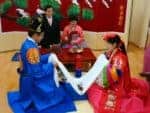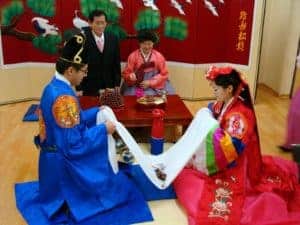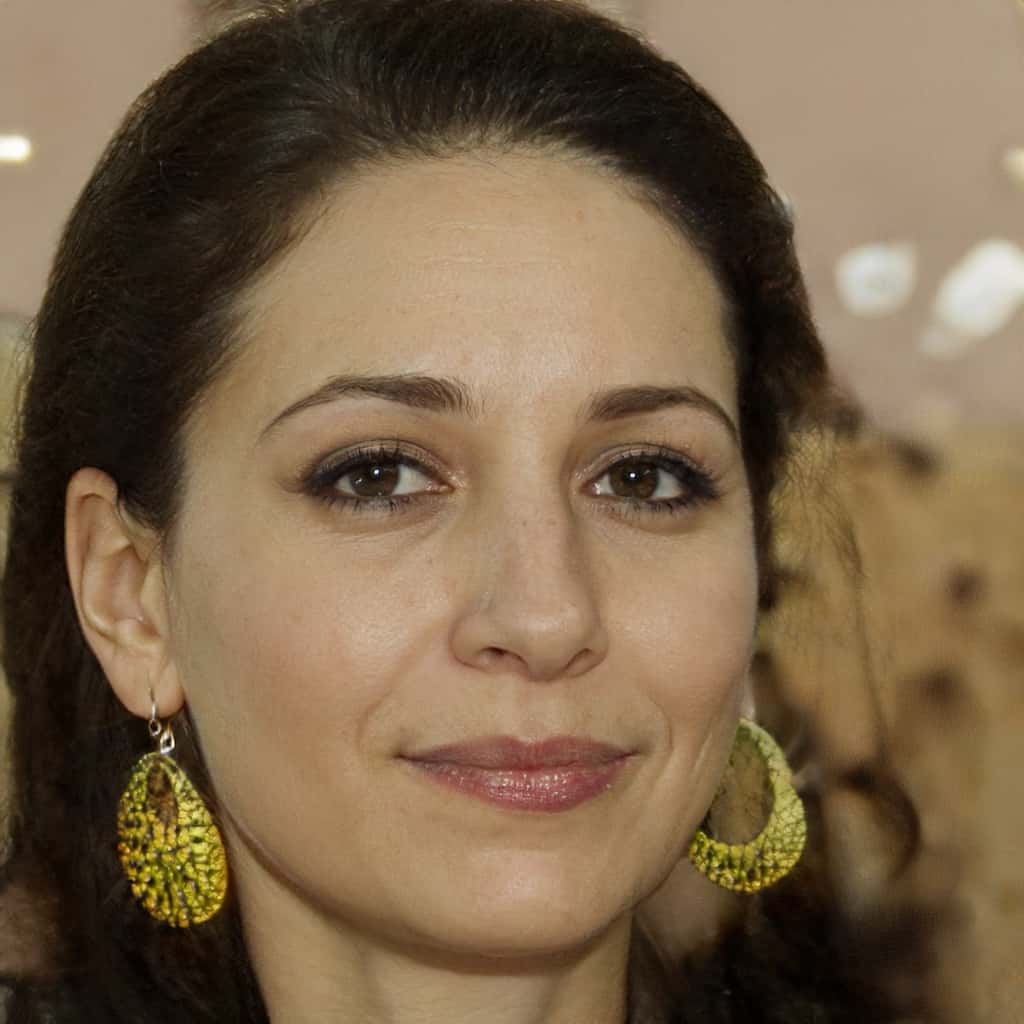
13 Steps in Traditional Wedding in Korea - Etiquette - Ceremony

The Korean traditional wedding ceremony was never simple. The steps were rather complicated and require help from a lot of people from the bride and groom's family and relatives, fortune teller, and wedding helper. The bow and other gestures at the wedding is symbolization of something. Korean traditional wedding involving three steps: pre-ceremony, ceremony, and post-ceremony.
You may also read:
Contents
Pre-Ceremony
The first step of traditional wedding in Korea is the pre-ceremony which consist of several events, there are:
1. Eui-hon 의혼 (Matchmaking Session)
The first thing to do before setting up a korean traditional wedding is matchmaking session. It’s a process where elders are looking for potential wife or husband for their unmarried child. This usually involved a services from professional matchmaker who would gather the information about local unmarried people.
After finding the prospective partner, the matchmaker would have both parents meet each other. Social levels, education, achievements, appearance, personality, and family background of the groom and bride-to-be are highly considered. Only the elders meet in this matchmaking session, while the groom and the bride themselves haven’t seen each other yet. If the meeting going smoothly, the groom side would send a marriage proposal to the bride’s family.
2. Nap-chae 납채(Setting the Date)
After the proposal was accepted by the bride’s family, the next step is Nap-chae or setting the date. Upon this arrangement, the groom’s family would present the groom’s spesific year, month, date, and exact hour birth according to the lunar calendar written on a white paper—this called Saju. The paper was folded 5 times evenly, then put in a white envelope with the word “Saju” written in the center.
After that, the envelope wrapped in bamboo branches and tied it with red and blue thread. Lastly, the package was wrapped in a cloth of red and blue called Sajubo. The letter then delivered to a fortune teller who would set the date according to the information written. After the date has set, the fortune teller would send a letter to the groom’s family.
3. Napp-ae (Exchanging Valuables)
The last step in pre-ceremony is the Napp-ae. It’s a tradition where the groom’s family sent presents to the bride and her family in a box called Ham. The one who delivered the box called Hamjinabi, would be sent with a small group of friend. By the time they arrived at the bride’s family, they would be offered food and drink in appreciation for their hard work. But the use of Hamjinabi is no longer common, because in the recent culture Hamjinabi was said to ask for money and alcoholic drink from the bride's family.
The Ham itself usually contained 3 items: Honseo or marriage paper, specified the groom’s name (sender) and the purpose of sending (marriage). The bride has to keep this document and having it buried with her when she died, as it symbolized her dedication for the husband. Second is Chae-dan, a series of red and blue fabric to make clothing and third Honsu, other valuables thing from the groom’s parents for the bride.
You may also read:
The Traditional Wedding Ceremony
The next step of traditional wedding in Korea is the wedding ceremony which consist of several events, there are:
1. Chin-young-rye (The Greeting)
The wedding traditionally held in the bride’s house. In the past, the groom rode a horse to the wedding venue, accompanied by his servants or attendants walking behind him. To hype up the mood, the groom's company played musical instruments along the journey. However, the groom has to hide his emotion and remain poker faced.
In the beginning of the ceremony, the groom enters the courtyard of the bride's house led by girukabi (the best man who carry a geese). Once the groom has entered the house, girukabi hands the geese to him.
2. Jeon-ahn-rye (Presentation of the Geese)
The groom then placed the geese—called kireogi—on a table and bowing twice to his mother in law. The mother in law then take the wild geese into the house. The wild geese symbolized the love of husband and wife. But nowadays wooden geese is used instead of the live one. Wild geese is literally a Mandarin duck.
3. Gyo-bae-rye (The Bow)
In an ancient Korean traditional wedding, this step marked the first time bride and groom see each other (nowadays the bride and groom usually dated before the wedding). The groom and bride have two people helping them with this. The groom stands on the east side of the table, while the bride walks to the west. The helpers then spread a mat for each the bride and groom. Then they faced each other across the table. Next, the helpers washed the bride and groom's hand. this symbolized that both has clean themselves for the ceremony.
The couple then standing on the mat, and the bride would bow twice to the groom. The groom bow once in return. The bow symbolized commitment and promised to each other.
4. Hap-geun-rye (Exchanging Gourd Dipper or Drinking)
Wondering about your man? Let's find out who he really is.
From the newly dating to the happily married, trust issues can creep up on anyone. With cheating cases soaring over 40% in the last two decades, it's natural to have your doubts.
Could he be sending flirty texts to another woman? Or secretly swiping on Tinder? Or even have a hidden criminal past? Or, the worst fear - could he be cheating?
This useful tool can bring the truth to light. It'll dig out hidden social media accounts, dating profiles, photos, any legal run-ins, and more. Let us help clear your mind.
The bride and groom helpers prepare drink (usually rice wine) and side dishes at this stage. The groom bows, then together with the bride present the drink to the sky (direction of God). After the helpers pour the drink, the groom bows once more and rise the cup as well as the bride. the bride and groom then exchange the cup which made of gourd dipper.
5. Seong-hon-rye (The Declaration)
Next after exchange drink with each other, the newlywed bride and groom make a declaration as husband and wife for the first time. In this step, bride and groom both faced the family and relatives and pays a deep bow to them for the first time.
You may also read:
Post-Ceremony
The last step of traditional wedding in Korea is the post-ceremony which consist of several events, there are:
1. Pye-baek (Bowing to Husband’s Parents)
After the main ceremony ended, the bride met her new parents in law. This ceremony usually take place in the main area living room, sectioned off by a folding screen. The groom’s father and mother sat in the east and west side respectively, and the bride would pay four time bows to them, showing respect and loyalty to her husband’s family.
2. Shin-bang (Bride’s Room)
For the special occasion, one room in the bride’s house was decorated for the newlyweds to respect their privacy. But this is not so private since the relatives would peek inside the room through a small holes create on the rice paper covering the windows. Their intention was to make sure the bride didn’t run away.
3. Woo-gwi (Bridal Procession)
Three days after the wedding was held, the newlyweds go to the groom’s house, usually his parents’. Near the groom’s house, neighbors would scattered red beans, cotton seed, and salt to keep out the evil spirits. The groom’s family also placed sacks of grain and burnt straws and the thresholds to the house which the bride has to cross. This represent the family wish for a good harvest by the presence of a new family member.
4. Hyeon-gu-rye (The Introduction)
Once the bride enters the groom’s house, she was formally introduced to the entire family. This ceremony was usually less formal. The whole family mingled in celebration for the new member joining the family.
You may also read:
- Signs Your Best Friend is in Love with You
- How to Make Him Fall in Love
- How Man Fall In Love
- Signs You Are Falling in Love
The Attire of Korean Wedding Tradition
One remarkable feature of the Korean traditional wedding was the attire worn by the bride and groom. Both wear Korean traditional costumes consists of several layers. Here are the attire worn by the bride and groom during the Korean wedding ceremony.
- Bride’s Attire
On the outside, the bride wears a short jacket with long sleeves called jeogori with two long ribbons tied to form otgoreum. As for the skirt, she wears chima, a full-length, high waisted, wrap around skirt. Her shoes take shape of a boat made of silk, worn with a pair of white cotton socks. The attire sometimes include a white sash of significant symbols or flowers. The bride was also wear a headpiece and an accesories called norigae which hung from her jeogori or chima. This norigae has been worn by all women from any social classes in Korea.
- Groom’s Attire
While the women’s attire consists of several layers and accesories, Korean traditional wedding groom attire was much simple. The groom wears jeogori, trousers and an overcoat. The jacket’s sleeves are loose, the trousers are roomy and it was tied with straps at the ankles. In addition, a vest and a black hat could also be worn.
Korean traditional wedding ceremony has pretty complicated steps, right? The best thing about it it's the true love among them. However it reflects their deep values of marriage, with every single steps and symbols involved in the whole ceremony has a deep meaning. In case you ever heard, always spread love on every corner.
Also read:
Utilize this instrument for a comprehensive background check
Whether your relationship is in its budding phase or you're in the blissful realm of marriage, escalating infidelity rates (over 40% in the past two decades) warrant your caution.
You may want to ascertain whether he is engaging in secretive text conversations with other women, maintaining active profiles on dating platforms like Tinder, or concealing a criminal history. Or you might be fearing the worst - infidelity.
This robust tool is designed to uncover hidden social media and dating profiles, unseen photographs, undisclosed criminal records, and much more, providing you with the clarity you need.

Leave a Reply










